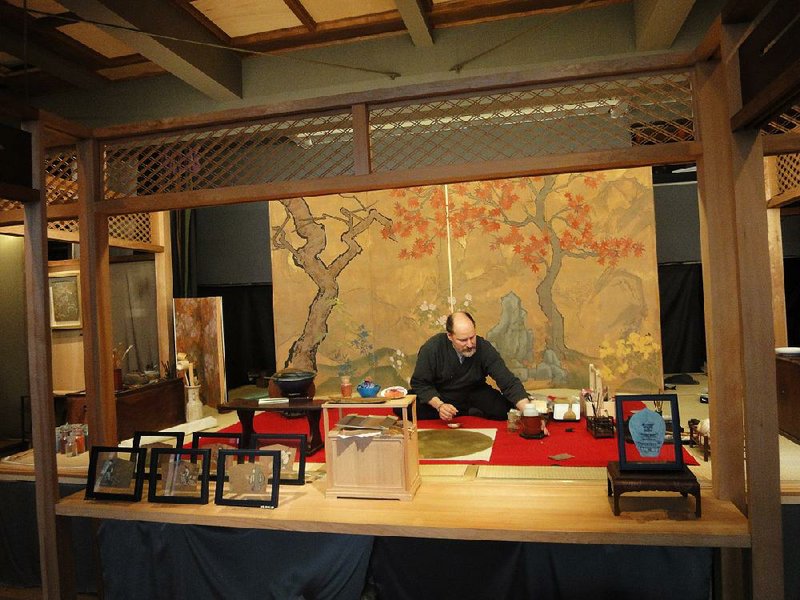TOKYO - The typical visitor to Tokyo envisions a futuristic city of skyscraper canyons and electronic gadgets, but in the eastern part of the city, an older way of life persists.
“In Yanaka, you have the history, the tradition, the temples,” says Allan West, who has lived there for more than 30 years, but “without any of the self-consciousness you have in Kyoto,” a city known for cultural preservation.
Yanaka is one of a trio of neighborhoods called Yanesen after their first syllables (Yanaka, Nezu and Sendagi). They are part of the shitamachi or old downtown district of Tokyo. Yanaka has a mid-20th-century vibe uncommon in Tokyo, which was mostly destroyed twice in the 20th century by earthquake and war. Small one-product shops that have sold rice crackers or traditional handicrafts for generations co-exist with modern art galleries and young bakers of artisanal European breads, set on wandering streets and alleys with a low, human scale very unlike the high-rises of familiar Tokyo neighborhoods like Shinjuku and Shibuya.
SHOP LOCALLY
Yanaka has few of the big franchise stores, often Western, that you see in the rest of the Tokyo. “People live above their businesses,” says West, an American artist. “None of this has a big corporation behind it. Pretty much the individuals who run them are there.”
The easiest place to start exploring is the old Yanaka Ginza shopping street, a short walk from Nippori Station. As you leave the station you’ll pass Yanaka Cemetery, worth a visit for the interesting gnarled cherry trees even when they’re not in flower. There you may have your first encounter with the wandering cats that are mascots of the neighborhood.
Continue down the hill from the station and you’ll come to a broad staircase leading down to Yanaka Ginza, where the visitor can find old and new crafts, old and new food, and souvenirs and gifts. A Western-style bakery that boasts of an oven made with stone from Mount Fuji stands next to a shop that sells traditional Japanese sweets. There’s a shop entirely devoted to items handcrafted from bamboo, a tiny stall where you can get T-shirts custom-printed with illustrations of various animals, and a shop that sells traditional wooden and straw-rope sandals.
You’ll see the feline motif throughout, from a modern gift shop of cat-theme gifts to a shop that sells the traditional bean paste-filled cakes usually made in the shape of a fish, but here, of course, in the form of a cat. If you’re hesitant about a bean-flavored dessert, order one of the soft ice cream cones and it’ll come with a tiny one to sample.
NEIGHBORHOOD LIFE
What’s also special about Yanaka is the window it offers on the everyday life of the neighborhood. Yanaka Ginza sells everything practical that locals could need. Some of itis familiar: a drugstore, small grocery, fish shop, butcher, and clothing and handbags from the cheap to the fashionable. Others are more unusual to Westerners: a shop that sells just pickled vegetables, and one that offers various kinds of fish paste.
It’s interesting to simply wander the residential alleys, where the unpaved streets are crowded with meticulously cared-for potted plants in front of small houses tightly packed together. You’ll also find yourself stumbling upon some of the more than 100 temples in the Yanesen area, with 73 in Yanaka alone.
To explore the rest of the neighborhood from Yanaka Ginza, you may pick up a detailed tourist map for 300 yen (about $2.85), but any of the free English neighborhood maps you can find around town will do just as well. Turn right at the end of the shopping street and you’ll find a tourist information center with many maps and brochures (although its opening hours are somewhat irregular), which can also arrange guided tours by reservation.
ART AND CRAFTS
This unassuming, sometimes shabby neighborhood has been a center of the arts for centuries, and still supports the old and new. Many traditional crafts are still practiced and can even be seen in action. “There are a lot of open workshops,” says West, who also holds open studio hours where you can watch him paint. “You’ll walk by the tatami maker, the silversmith, and can look into the window and see them doing that.”
Only nine stores remain in all of Japan that supply the traditional pigments, ground from precious stones, that West paints with, and four of them are in Yanaka. Contemporary art galleries also exist, some in repurposed buildings such as an old public bathhouse and a pawnshop built in 1847.
BREAK FROM THE BUSTLE
Another way that Yanaka is unlike the rest of Tokyo is that the streets are quiet at night, so it’s best visited in the daytime. But this is part of its charm and another reason to come. Another Westerner who has lived here for decades, Dennis Pasche, says, “It’s good for relaxing - to remove stress, to decompress.”
Pasche has built a Swiss chalet in Yanaka on what he says is the highest point in Tokyo, but despite this re-creation of something of his native Switzerland, he’s passionate about his adopted home.
“In Tokyo, you can find whatever you want,” he says. “In Shinjuku, Roppongi, Shibuya, you find the Western world. If you are interested in the culture you need to come downtown. This is downtown. The culture remains here, alive.”
For more information, contact the Yanesen Tourist Information Center at ti-yanesen.jp/en/.
Travel, Pages 52 on 01/19/2014
